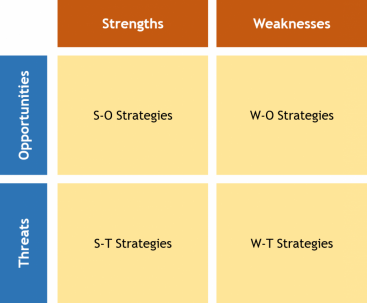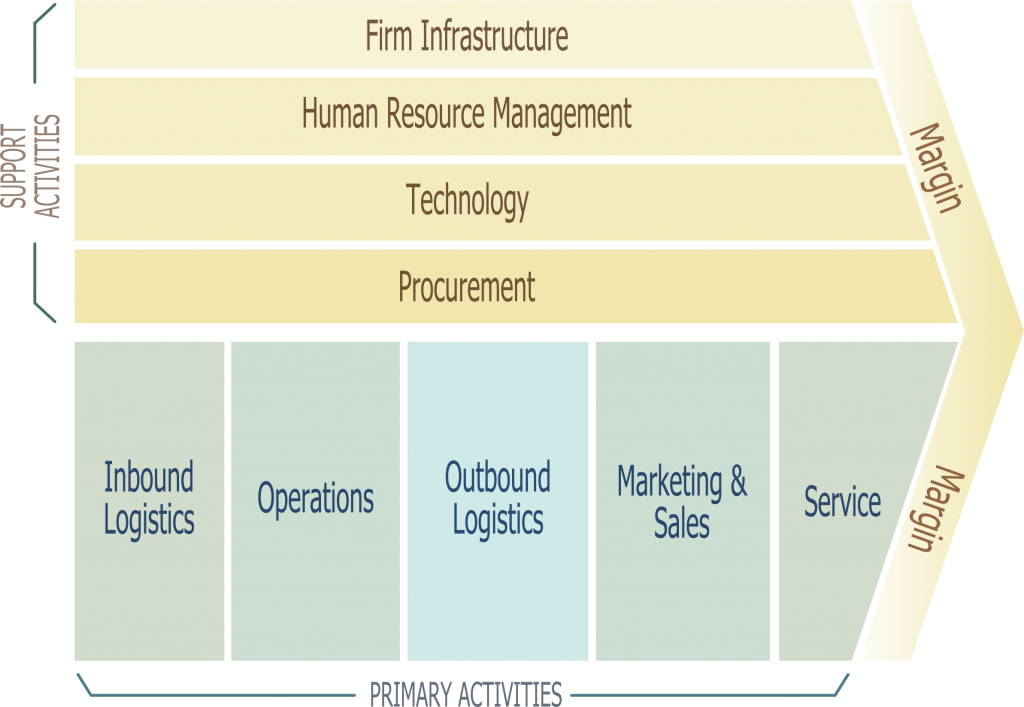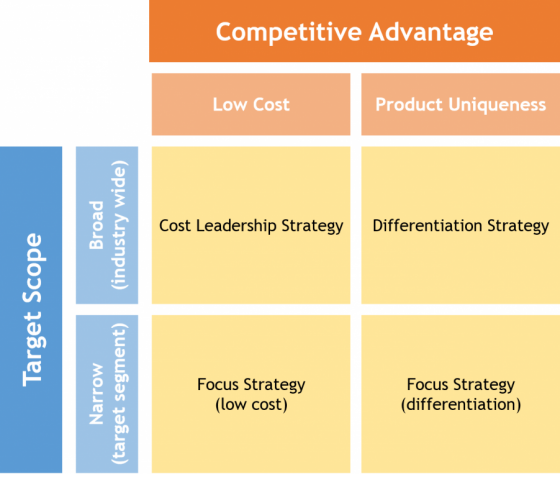Executive Summary
Strategic management comprises the decisions a company’s management concerning strategies that enhance the company’s competitive advantage and its performance (MSG NO YEAR). There exists a variety of different concepts and tools in strategic management. In the following, three of these tools have been selected and briefly explained, namely SWOT Analysis, Porter’s Value Chain and Porter’s Generic Strategies. These can be powerful concepts to be embedded in a business plan.
Introduction
Strategic management comprises the decisions a company’s management concerning strategies that enhance the company’s competitive advantage and its performance (MSG NO YEAR). In the context of editing a business plan, strategic management should not be understood as a separate section but more as a field of business administration that provides helpful tools and concepts in relation to the rest of the business plan’s contents. As the field of strategic management is way too broad to be captured in this brief factsheet, a selection of strategic management concepts will be outlined in the following paragraphs.
SWOT Analysis
“SWOT” stands for strengths (S), weaknesses (W), opportunities (O) and threats (T) and the process of analysing these four elements and deriving strategies from it is a powerful tool when creating a business plan. Most of the information needed to determine the S, W, O, and T should already be available from other sections in the business plan. The company’s strengths can be derived from the Company Description, opportunities and threats can be concluded from Market Analysis and Risk Assessment. From this compiled information, strategies can be developed on how to deal with company’s internal and external situation:
- S-O strategies: use the opportunities that match the company’s strengths
- W-O strategies: defeat weaknesses to make use of opportunities
- S-T strategies: use strengths to limit the threats’ impact on the company
- W-T strategies: prepare the company for threats that could hit the company at its weak spot

SWOT matrix adapted from QuickMBA (NO YEAR-a). Source: Own illustration
Porter’s Value Chain
In order to better understand a company’s competitive advantage, the generic value chain model by Michael Porter is commonly applied which analyses a company based on its value-creating activities (QuickMBA NO YEAR-b). In this model, primary activities (like operations or marketing) are complemented by support activities (like human resources or technology). While some company’s might see the latter as potentials for outsourcing, others create competitive advantage out of support activities. For a business plan, this model provides a good guideline to visualise the company’s value creating activities. It might also serve as a summary for other sections in the business plan.

Porter's Value Chain. Source: SINGH (2009)
Porter’s Generic Strategies
Another useful tool in strategic management developed by Michael Porter is the generic strategies model. It is based on the idea that a company’s competitive advantage is either based on a low cost position or a unique product and taking into account the scope of the targeted market can result in a given set of generic strategies (QuickMBA NO YEAR-c):
- Cost leadership strategy: a company can use its low cost position to either operate with higher profitability compared to its competitors or gain market share by offering low prices.
- Differentiation strategy: the unique features of a company’s product can be used to charge a premium price and thereby overcompensate the additional costs or increase customer loyalty.
- Focus strategy: a focus is put on a specific market segment to either make use of the low cost position or the unique product features. By this, a company can create high customer loyalty and defend its market niche against new entrants.
The model additionally implies that a combination of the different generic strategies might result in “stuck in the middle” situation, where the company is unable to use its competitive advantage.

Porter's Generic Strategies, adapted from QuickMBA (NO YEAR-c). Source: Own illustration
Strategic Management - Meaning and Important Concepts
SWOT Analysis
The Value Chain
Porter's Generic Strategies
Dinesh Pratap Singh's Visualization for Porter's Value
What is Strategic Management
This textbook chapter gives a good introduction to strategic management issues.
DOBSON, P.W. STARKEY, K. RICHARDS, J. What is Strategic Management. In: DOBSON, P.W. ; STARKEY, K. ; RICHARDS, J. ; (2004): Strategic Management: Issues and Cases, 2nd Edition. 1-17. URL [Accessed: 16.12.2015]The Value Chain
This document provides a comprehensive description of Porter's value chain.
RECKLIES, D. (2001): The Value Chain. In: FAO User Uploads: URL [Accessed: 16.12.2015]Porter’s Generic Competitive Strategies
This paper assesses Porter’s generic competitive strategies and provides case studies for each strategy.
TANWAR, R. (2013): Porter’s Generic Competitive Strategies. In: IOSR Journal of Business and Management: Volume 15 , 11-17. URL [Accessed: 17.12.2015]

